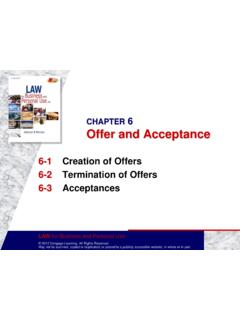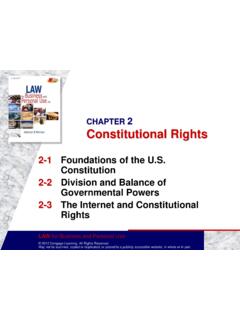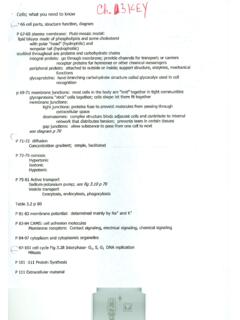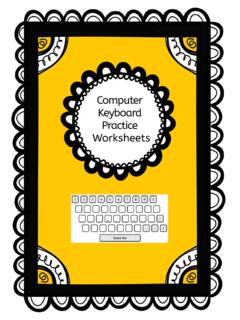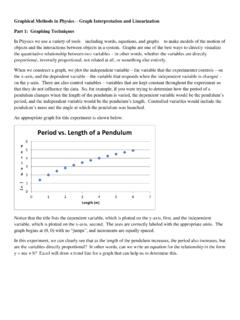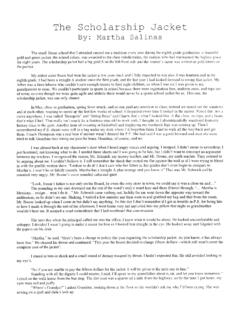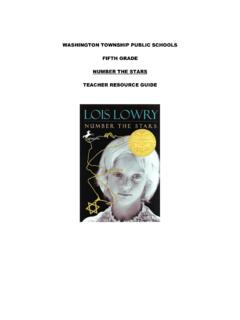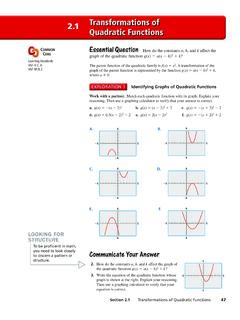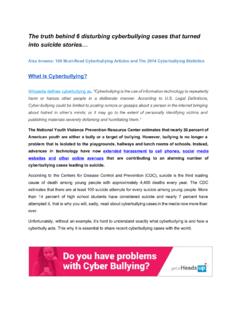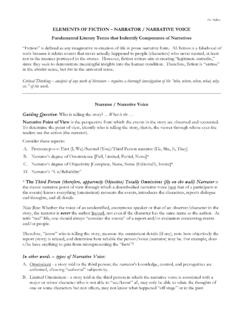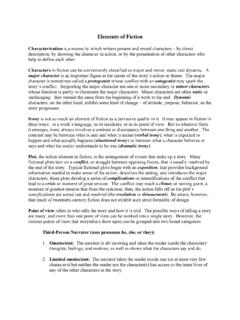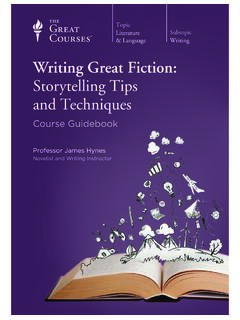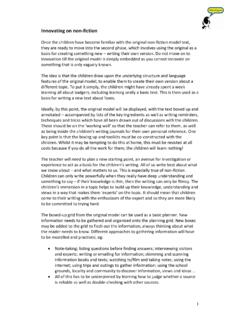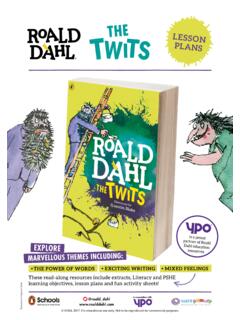Transcription of Non-Fiction Unit
1 Non-Fiction Unit Grade 4 5 weeks of lessons * Integrate unit with writing unit and use the Non-Fiction book(s) for the research paper to address many of these standards. * Additional Resources for exploring Non-Fiction (Story Works, National Geographic, Time for Kids, Articles, etc.) Non-Fiction UNIT READING CALENDAR Week/ Section 1 Whole Class Lesson 1 Introduce the genre: Non-Fiction Text Structures Compare elements of fiction and Non-Fiction : Mixed Bag Activity Whole Class Introduce the genre (cont.)
2 : Non-Fiction Text Structures Pre-Reading Organizer Independent/ Teacher Circulates Relate to genre overview- , Elements/features of Non-Fiction text Independent/ Teacher Circulates Relate to genre overview- , Elements/features of Non-Fiction text Independent/ Teacher Circulates Relate to genre overview- , Elements/features of Non-Fiction text Week/ Section 2 Whole Class Lesson 2: Determining the Main Idea Interesting Facts vs. Important Facts Whole Class Lesson 2: Determining the Main Idea Main Ideas vs. Supporting Ideas Independent/ Teacher Circulates Relate to determining the main idea Independent/ Teacher Circulates Relate to determining the Main Idea Independent/ Teacher Circulates Relate to determining main idea Week/ Section 3 Whole Class Lesson 3.
3 Summarizing Independent/ Teacher Circulates Relate to Summarizing Independent/ Teacher Circulates Relate to Summarizing Independent/ Teacher Circulates Relate to Summarizing Independent/ Teacher Circulates Relate to Summarizing Week/ Section 4 Whole Class Lesson 4: Interpreting Information Task Cards Activity Independent/ Teacher Circulates Relate to Understanding information Independent/ Teacher Circulates Relate to Understanding information Independent/ Teacher Circulates Finish reading book & pulling information for research report Independent/ Teacher Circulates Finish reading book & pulling information for research report Special Education Accommodations Special education students should be challenged to read so they can gain the academic rigor required.
4 Teachers should use their own discretion if students need the passage read to them or they can read it own their own. Teachers can read the passage, questions and answers, depending on the need Whole Class Lesson # 1 Identifying the Characteristics of Nonfiction Text Common Core Standard: RI Overview: Determine the characteristics of informational text. Classroom Resources: Chart paper Overhead projector/document camera What is text structure? worksheets (attached) Non-Fiction pre-reading organizer Instructional Plan: Have students compare and contrast various text structures of nonfiction.
5 Instruction and Activities: 1. Then use the Mixed Bags: Nonfiction Text Structures lesson. (attached) 2. Have the students identify the text structure and features of the nonfiction text. Student Assessment/Reflections: Formally assess students' comprehension of the characteristics of a nonfiction/informational text by having students complete a Comparison Chart. Students will use three nonfiction texts to complete the Comparison Chart. Additional Resources for Future Mini Lessons/ Differentiated Lessons: Nonfiction mentor text, (Tying the Score, Food for Thought, or Digging Up Tyrannosaurus Rex) Resources (teacher s choice) Examples: State Reference Books, Animal Books, National Geographic Magazine Venn diagram (attached) Scholastic Storyworks What is Text Structure?
6 Text structure refers to the ways that authors organize information in text. Teaching students to recognize the underlying structure of content-area texts can help students focus attention on key concepts and relationships, anticipate what s to come, and monitor their comprehension as they read. As readers interact with the text to construct meaning, their comprehension is facilitated when they organize their thinking in a manner similar to that used by the author. Readers who struggle with text comprehension often do so because they fail to recognize the organizational structure of what they are reading, and they are not aware of cues that alert them to particular text structures (Cochran & Hain).
7 Obviously, all texts are different to a certain extent, but depending upon the author's purpose, the topic and the genre, reading selections tend to be organized to employ a few predominant structural patterns. The following should be explicitly taught to teach students to comprehend more effectively: Structure (Organization) fiction Non-Fiction Story Elements: Characters Setting Problem/Solution Plot Cause and Effect Sequence Problem/Solution Description Compare and Contrast fiction texts typically have literary elements such as characters, setting, problem/ solution, and plot.
8 Hearing stories told and read aloud helps children internalize the elements of fiction . When they begin to read, they expect that there will be characters and that some will be more important than others. They also expect a resolution, a satisfying ending. One effective way to help students identify nonfiction structures is to teach words and phrases that frequently signal organization. For example, if students know that words such as like, unlike, and in contrast are often used when one thing is being compared to another, they can readily spot the author's intention and they'll be better equipped to understand the text as a whole.
9 Authors use text features to bring attention to important details. You can use the following features to become more successful and efficient in your reading: Text Features fiction Non-Fiction Title Chapter Index (for Chapter Books) Illustrations Bold Print Continuous Text Paragraphing Dialogue Title Table of Contents Index* Photos Captions Diagrams Glossary Date line (periodicals) Bold Print Headings Sub-titles *The more readers build up knowledge about these elements and underlying structures, the better they can use them as sources of information.
10 Teaching Structures Text Organization Mixed Bags: Nonfiction Text Structures In order to understand nonfiction as a genre, it is useful to compare and contrast various text nonfiction text structures ( , compare/contrast, sequence, description, problem/solution, and cause/effect). This lesson uses bags (paper or cloth) filled with nonfiction books containing different text structures to help the students discover the differences. OBJECTIVE Students will: 1. Explore the contents of their "mixed bags" nonfiction books with varying text structures 2.
